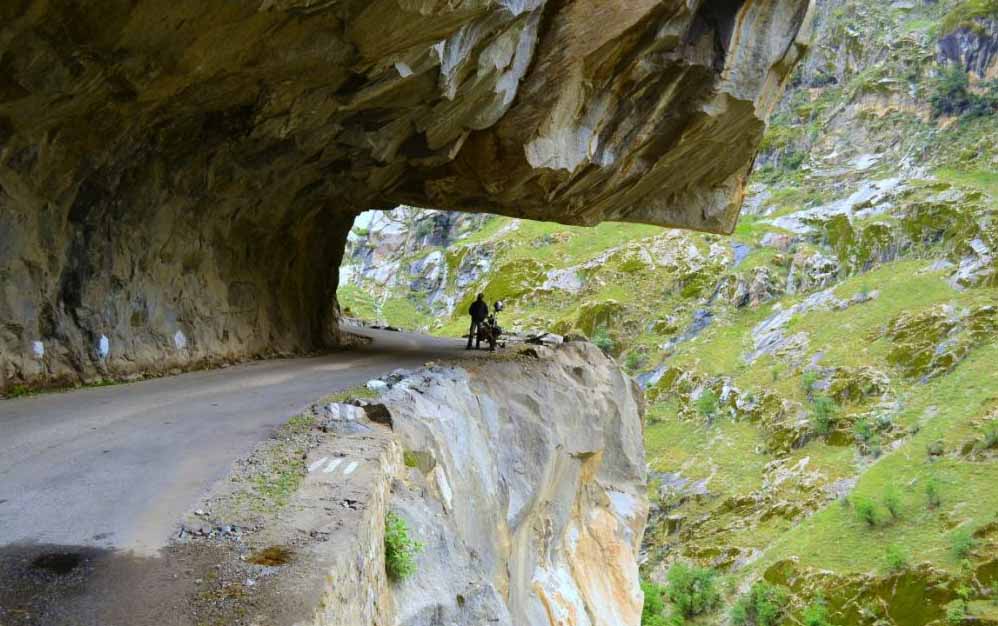How to Reach Nepal :
By Air:- Kathmandu Tribhuvan Airport is the only international airport in the country of Nepal. The airport has flights operational to and from various destinations all across the globe. Within Nepal, the entire country is connected through air, even though by small aircrafts at most places with smaller runways. From India Most major air carriers like IndiGo Airlines, Indian Airlines, Jet airways operate daily flights to Kathmandu. Reaching Kathmandu by flight from New Delhi is the most convenient way.
By train:- Boarding a train from Delhi to Gorakhpur or you can start your journey at Jaynagar in Bihar which commences at the Janakpur Dham in Nepal. This is a narrow gauge line. you can also look for Vaishali Express which leaves Delhi at around 19:45 and arrives at Gorakhpur Junction at 09:10 am next morning, or there's another train also from New Delhi at 17:20 arriving Gorakhpur at 06:35am next morning. The fare is around Rs. 2440 (£35 or $54) in AC tier-1, Rs. 1240 (£18 or $27) in AC tier-2, Rs. 785 (£12 or $18) in AC tier-3 or Rs.315 in Sleeper Class - check current timings and fares of train at Indian Railway .Take a local bus or jeep from Gorakhpur to the Nepalese frontier at Sunauli (Indian side) and Bhairawa (Nepalese side, often also called Sunauli). The journey can take about 3 hours to reach Bhairawa bus station and can cost upto Rs 55 (£1 or $2). Walk across the border, it's then a few minutes walk to the Bhairawa bus station. Then take a bus or jeep for Kathmandu. Buses take 9 to 12 hours and cost about 120 Nepalese Rupees or 130 Indian Rupees (£1 or $2). There are many buses daily, either daytime buses leaving regularly until about 11:00 or overnight buses leaving regularly from about 16:00 until 19:00. Indian rupees may be accepted here in Bhairawa, but not always further into Nepal.
By Road :- Border between India and Nepal ,is a great way to reach Nepal by road. Entering Point in Nepal are Kakkarbhitta (West Bengal), Biratnagar (Bihar),Birgunj (Bihar), Sunauli, Nepalgunj, Dhanagadi and Mahendranagar (all across the border from Uttar Pradesh).You can drive in by a cab or a car. Tehre are also bus services from Delhi are available that enter Nepal at Biratnagar, the second largest city in Nepal after Kathmandu. Indians do not need a visa to enter into Nepal. Visitors from other nationalities require a Visa. None of the entry points has a provision for Visa.
Weather & seasonality:
Nepal has four diffrent climate season and the weather conditions vary from season to season and from region to region.
Spring (between March – May): (16-23 Degree Celsius) The temperature is mildly warm in low lands while moderate in higher altitudes.It is also the time for flowers to blossom.
Summer (between June – August): (23-25 Degree Celsius) This is also the monsoon season in Nepal. The weather is hot and wet at times. It rains almost everyday with occasional thunderstorms in the evening. During the rainy monsoon season between June to August, it rains to an average between 200-375 millimeters in Kathmandu. There is occasional rainfall during the other seasons too.
Autumn (between September – November): (15-24 Degree Celsius) Best tourist season in Nepal with the summer gone by and the winter to set in. The weather is highly pleasant so are the mountain views. This is the peak season for touring as mountain looks incredible. Book your flight in advance as flight cost will increase. This is also the season of festivities as Nepal celebrates the biggest Hindu festivals Dashain followed by Tihar.
Winter (between December – February): (9-12 Degree Celsius) The weather is cool and the sky is clear with occasional snowfalls at higher elevations. This season is good for trekking in lower elevations.
Travel Tips: Monsoon in Nepal is not the typical monsoon of Asia. Rains usually occur during the night-time leaving the sky clean and
clear by the morning making the Himalayan view even more dramatic. Some parts of the Himalayas in Manang, Mustang and Dolpo are in
rain-shadow areas; the mountains are high enough to block the clouds. Tibet's high travel season also corresponds to Nepal's monsoon.




